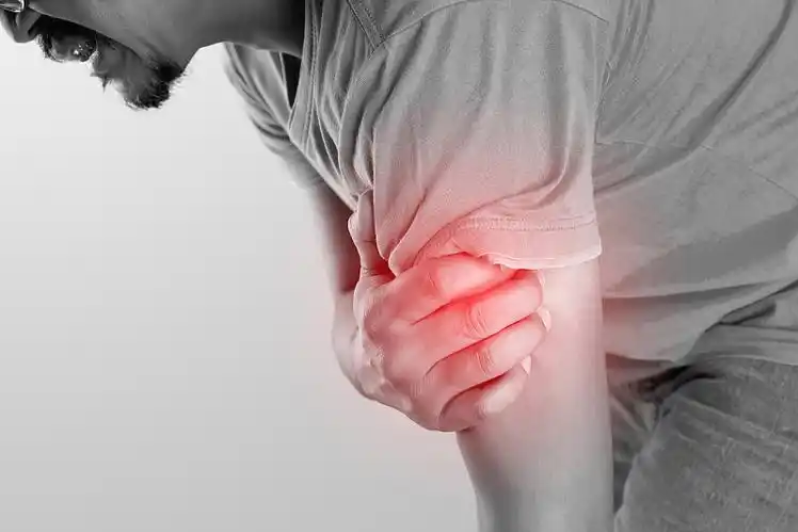Muscle pain is a significant physiological sensation that serves as a warning signal to the nervous system, indicating the need for protection against potential harm from chemical, thermal, or mechanical stimuli. However, pathological pain can become a symptom of disease, especially when it manifests acutely or evolves into chronic pain—a unique phenomenon that can lead to intermittent or persistent discomfort for months or even years. Chronic pain has a notably high prevalence in the general population.
Recent literature has shed light on the beneficial effects of hyperbaric oxygen therapy (HBOT) on various chronic pain conditions, including fibromyalgia syndrome, complex regional pain syndrome, myofascial pain syndrome, pain related to peripheral vascular diseases, and headaches. Hyperbaric oxygen therapy can be used for patients experiencing pain unresponsive to other treatments, highlighting its critical role in pain management.

Fibromyalgia Syndrome
Fibromyalgia syndrome is characterized by widespread pain and tenderness at specific anatomical points, known as tender points. The exact pathophysiology of fibromyalgia remains unclear; however, several potential causes have been proposed, including muscular abnormalities, sleep disturbances, physiological dysfunction, and neuroendocrine changes.
The degenerative changes in the muscles of fibromyalgia patients result from reduced blood flow and localized hypoxia. When circulation is compromised, the ischemia that ensues decreases adenosine triphosphate (ATP) levels and increases lactic acid concentrations. Hyperbaric oxygen therapy facilitates enhanced oxygen delivery to tissues, potentially preventing tissue damage caused by ischemia by lowering lactic acid levels and helping to maintain ATP concentrations. In this regard, HBOT is believed to alleviate pain at tender points by eliminating localized hypoxia within muscle tissue.
Complex Regional Pain Syndrome (CRPS)
Complex regional pain syndrome is characterized by pain, swelling, and autonomic dysfunction following soft tissue or nerve injury, often accompanied by changes in skin color and temperature. Hyperbaric oxygen therapy has shown promise in reducing pain and wrist edema while enhancing wrist mobility. The beneficial effects of HBOT in CRPS are attributed to its ability to diminish edema caused by high-oxygen vasoconstriction, stimulate suppressed osteoblast activity, and reduce the formation of fibrous tissue.
Myofascial Pain Syndrome
Myofascial pain syndrome is characterized by trigger points and/or movement-triggered points that involve autonomic phenomena and associated functional impairments. Trigger points are located within taut bands of muscle tissue, and simple pressure on these points can cause tender pain in the affected area and referred pain at a distance.
Acute trauma or repetitive microtrauma can lead to muscle injury, resulting in the rupture of the sarcoplasmic reticulum and the release of intracellular calcium. The accumulation of calcium promotes continued muscle contraction, leading to ischemia through the compression of localized blood vessels and increased metabolic demand. This lack of oxygen and nutrients quickly depletes local ATP levels, ultimately perpetuating a vicious cycle of pain. Hyperbaric oxygen therapy has been studied in the context of localized ischemia, and patients receiving HBOT have reported significantly increased pain thresholds and reduced Visual Analog Scale (VAS) pain scores. This improvement is attributed to increased oxygen utilization within muscle tissue, effectively breaking the vicious cycle of hypoxic-induced ATP depletion and pain.
Pain in Peripheral Vascular Diseases
Peripheral vascular diseases typically refer to ischemic conditions affecting the limbs, particularly the legs. Rest pain indicates severe peripheral vascular disease, occurring when resting blood flow to the limbs is significantly reduced. Hyperbaric oxygen therapy is a common treatment for chronic wounds in patients with peripheral vascular disease. While improving wound healing, HBOT also alleviates limb pain. The hypothesized benefits of HBOT include reducing hypoxia and edema, decreasing the accumulation of proinflammatory peptides, and increasing the affinity of endorphins for receptor sites. By improving the underlying conditions, HBOT can help reduce pain associated with peripheral vascular disease.
Headaches
Headaches, particularly migraines, are defined as episodic pain that usually affects one side of the head, often accompanied by nausea, vomiting, and visual disturbances. The annual prevalence of migraines is approximately 18% in women, 6% in men, and 4% in children. Studies indicate that oxygen can alleviate headaches by reducing cerebral blood flow. Hyperbaric oxygen therapy is more effective than normobaric oxygen therapy in elevating arterial blood oxygen levels and causing significant vasoconstriction. Therefore, HBOT is deemed more effective than standard oxygen therapy in treating migraines.
Cluster Headaches
Characterized by extremely severe pain surrounding one eye, cluster headaches are often accompanied by conjunctival injection, tearing, nasal congestion, rhinorrhea, localized sweating, and eyelid edema. Oxygen inhalation is currently recognized as an acute treatment method for cluster headaches. Research reports have shown that hyperbaric oxygen therapy proves beneficial for patients who do not respond to pharmacological treatments, reducing the frequency of subsequent pain episodes. Consequently, HBOT is effective not only in managing acute attacks but also in preventing future occurrences of cluster headaches.
Conclusion
In summary, hyperbaric oxygen therapy demonstrates significant potential in alleviating various forms of muscle pain, including conditions such as fibromyalgia syndrome, complex regional pain syndrome, myofascial pain syndrome, peripheral vascular disease-related pain, and headaches. By addressing localized hypoxia and promoting oxygen delivery to muscle tissues, HBOT provides a viable alternative for patients suffering from chronic pain resistant to conventional treatment methods. As research continues to explore the breadth of hyperbaric oxygen therapy’s efficacy, it stands as a promising intervention in pain management and patient care.

Post time: Apr-11-2025

